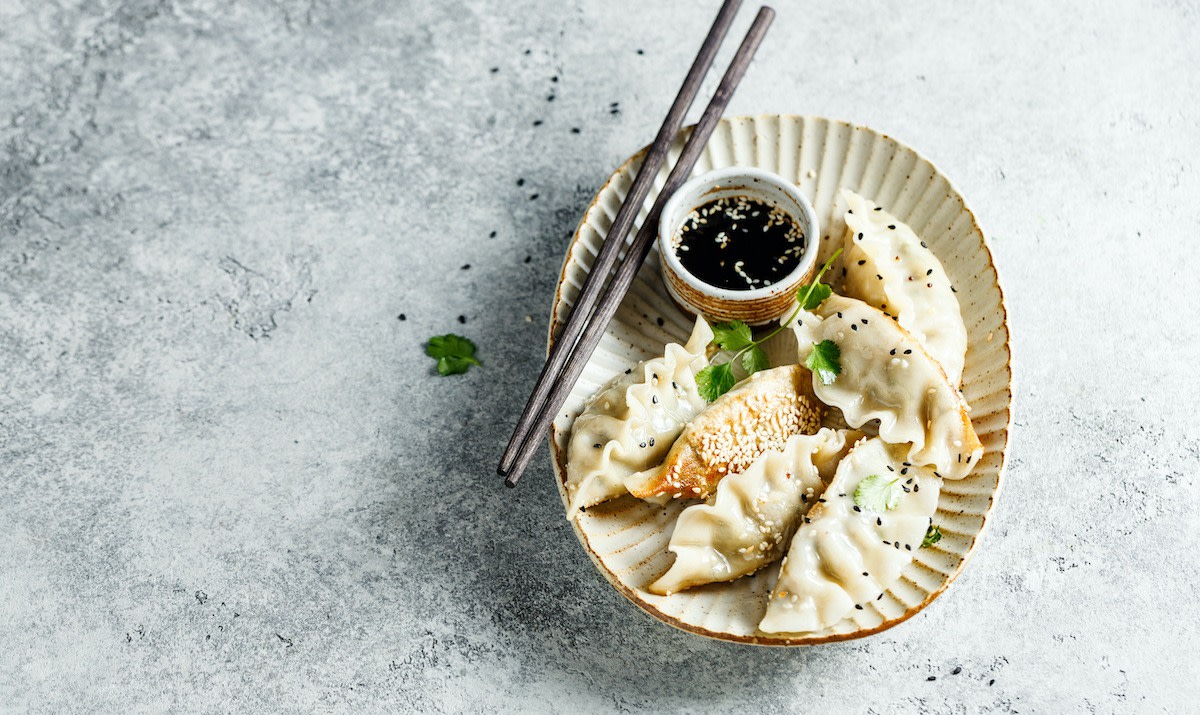Mandu Recipe: How to Make Korean Dumplings
Written by MasterClass
Last updated: Feb 11, 2024 • 4 min read
Mandu are Korean dumplings made with a variety of fillings. You can steam, pan-fry, or serve them in broth as an appetizer or main course. Store-bought skins make quick work of this easy mandu recipe. The balance of creamy tofu, spicy kimchi, rich ground pork, and fresh herbs is the perfect introduction to the flavors of traditional Korean cuisine.
Learn From the Best
What Are Mandu?
Mandu are Korean dumplings made with a wheat-flour-based dough wrapper—also called a dumpling skin—and filled with a combination of vegetables, meat, and tofu. Many cultures have unique versions of dumpling recipes and myriad ways of serving them. You’ll often find Korean mandu served in broth during New Year celebrations, but you can also fry, steam, or boil them.
The folding and sealing style varies among regions and often hints at the filling inside. If you plan on making multiple types of dumplings, fold them in different ways, so you can easily recognize the flavors. This mandu recipe works well as a make-ahead recipe: Simply freeze uncooked dumplings, then cook them straight from the freezer for an anytime snack or appetizer.
Mandu vs. Gyoza: What’s the Difference?
There are a few key differences between mandu and Gyoza, outlined below:
- Cooking method: You can steam, fry, or boil mandu. Gyoza, sometimes called potstickers, are steam-fried, meaning they get cooked with steam first, then pan-fried in vegetable oil to create a golden brown, crispy exterior.
- Dipping sauce: Mandu sometimes come with dipping sauces, but it’s just as common to see them served with kimchi or rice cakes as an appetizer or in broth. Gyoza almost always come with a dipping sauce made from vinegar and soy sauce.
- Place of origin: Although most dumplings have their roots in China, they have evolved throughout centuries of colonization. Mandu hail from Korea, while Gyoza are a more modern Japanese dumpling style.
- Skins: Mandu wrappers vary in thickness depending on the application. Thicker-skinned mandu holds up better in broth, while thinner-skinned mandu are best for steaming or frying. Gyoza typically feature a very thin dumpling wrapper that cooks quickly, crisps well, and is ideal for steam-frying.
4 Tips for Making Mandu
Here’s how to get juicy, flavorful mandu at home:
- 1. Use 80/20 ground meat. A higher fat ratio makes for a juicy and tender dumpling filling, so choose a ratio of 80/20 (eighty percent muscle, twenty percent fat) for the ground pork in this recipe to ensure the mixture isn’t too dry. You can also substitute the pork with ground beef, turkey, or chicken.
- 2. Mince the ingredients finely. Each bite of mandu should showcase the flavor of every element. Mincing the ingredients is crucial in ensuring the kimchi and vegetables get incorporated into the ground meat and tofu for a rich and deeply flavorful filling.
- 3. Chill the filling. As you mix the ingredients in the filling, the pork fat may warm or smear. To ensure the dumplings stay moist, chill the filling for at least ten minutes before assembling the dumplings, giving the filling in this mandu recipe a chance to set.
- 4. Fold carefully. Be sure to fully seal the edges of the mandu before freezing or cooking. A loose seal will cause the filling to escape and the skin to break as the mandu cook. Slightly wetting the edges before folding ensures a tight seal.
Easy Korean Mandu Recipe
makes
40 dumplingsprep time
1 hrtotal time
1 hr 7 mincook time
7 minIngredients
- 1
In a large bowl, combine all the ingredients except the dumpling skins and flour.
- 2
Mix the filling thoroughly by hand to combine.
- 3
Cover the mixing bowl with plastic wrap and chill the filling for at least 10 minutes in the refrigerator.
- 4
Meanwhile, line two baking sheets with parchment paper and lightly sprinkle them with flour.
- 5
Fill a small bowl with cold water.
- 6
Lay a dumpling skin flat on your palm.
- 7
Place a tablespoon of the filling into the center of the wrapper, then lightly wet the edges with water.
- 8
Fold the wrapper in half, pinching the edges together to seal completely.
- 9
Bring both pointy ends toward the center, and pinch together to seal into a rounded half-moon shape.
- 10
Place the filled dumpling onto the prepared baking sheet and repeat with the remaining wrappers, returning the filling to the fridge as needed.
- 11
If desired, freeze the filled mandu on the sheet trays until solid, about 1 hour, then transfer them to plastic bags to store in the freezer.
- 12
To cook the mandu, set up a cheesecloth-lined steamer basket over a pot of boiling water.
- 13
Place the mandu an inch or so apart in a steamer basket, cover, and steam until the skins are translucent and the filling reaches an internal temperature of 160 degrees Fahrenheit, 5–7 minutes. Serve hot.
Become a better chef with the MasterClass Annual Membership. Gain access to exclusive video lessons taught by the world’s best, including Niki Nakayama, Gabriela Cámara, Chef Thomas Keller, Yotam Ottolenghi, Dominique Ansel, Gordon Ramsay, Alice Waters, and more.
